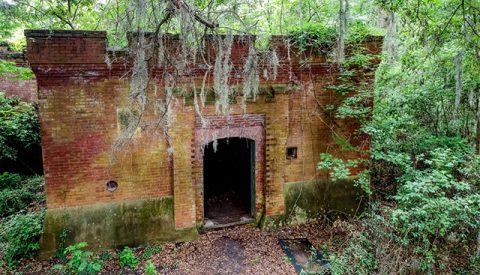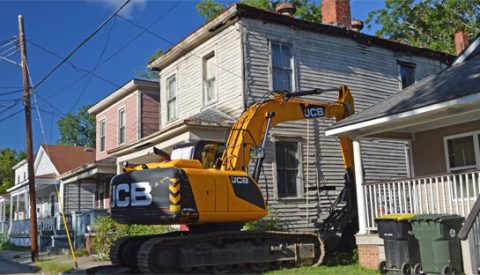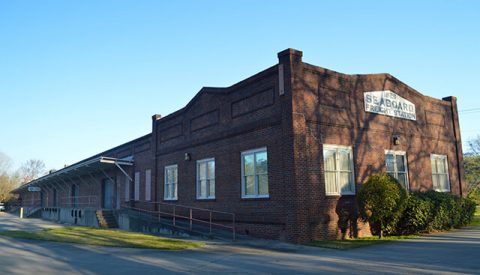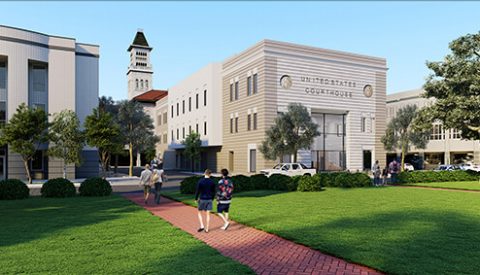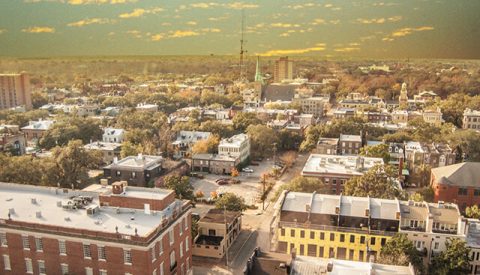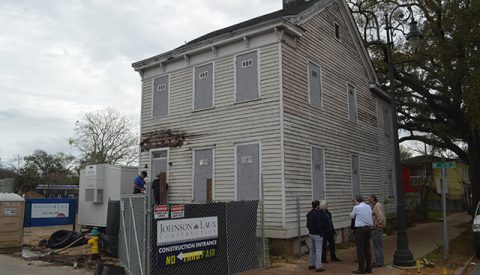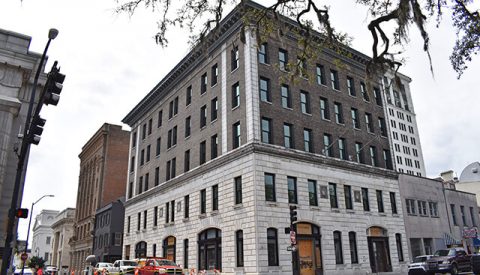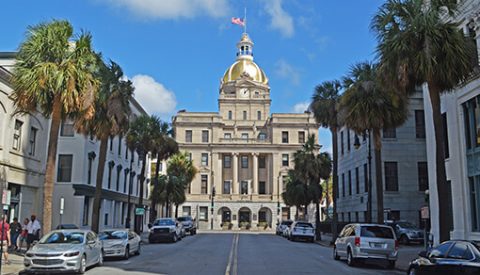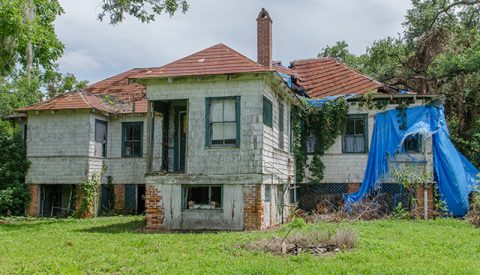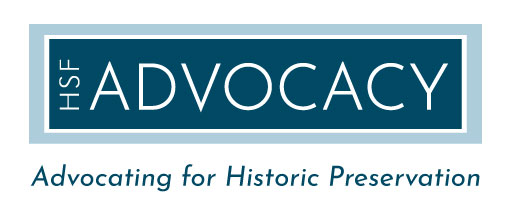
“Our lives begin to end the day we become silent about the things that matter.” – Martin Luther King Jr.
It’s not easy being an advocate. But it’s important… and worth it. Do you think the Seven Ladies had an easy go of saving the Davenport House? Do you think starting and capitalizing a Revolving Fund was a walk in the park? The Seven Ladies didn’t have a plan– they had a dream. HSF’s Revolving Fund wasn’t distracted by how much money to raise– it was focused on saving endangered historic buildings. So to those who wonder why HSF does what it does… we do it because this place matters.
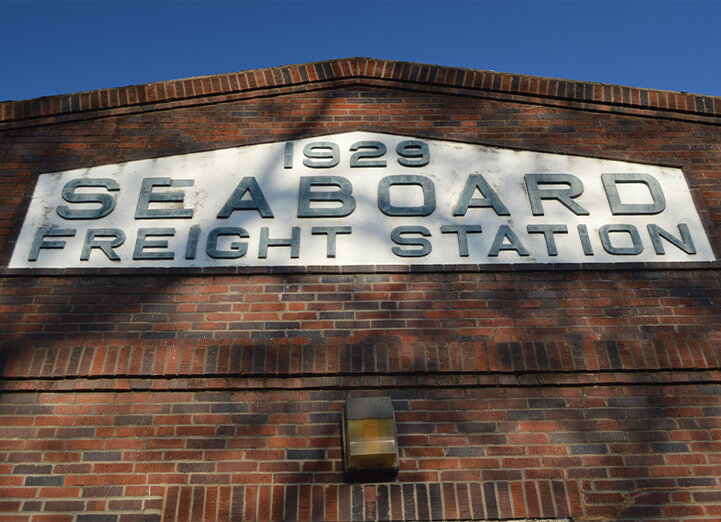
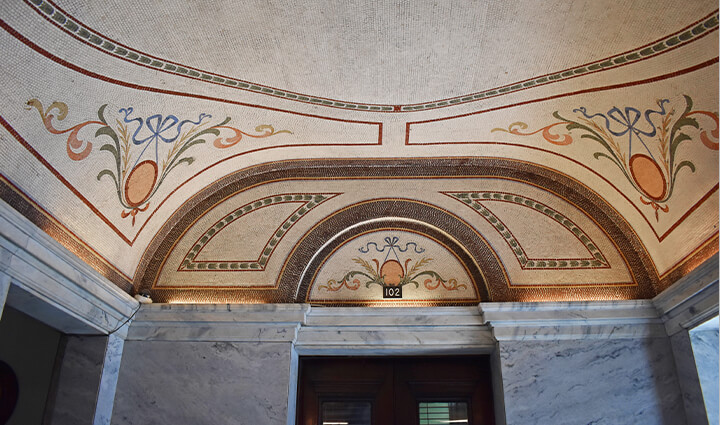
When HSF takes a position on an issue, we do so thoughtfully and deliberately. Something always hangs in the balance, and we are trying to move the needle. No one person makes the decision– it comes about as a result of multiple parties’ input, debate, and consideration. Our presence at the Planning Commission, City Hall, and, when necessary, court reflects a commitment to our mission and to Savannah. Join us. Yes, you can… and yes, you should.
What follows are some of the recent projects HSF has been actively engaged with as an advocate for preservation and sound public policy, all in an effort to maintain what makes Savannah unique and special.
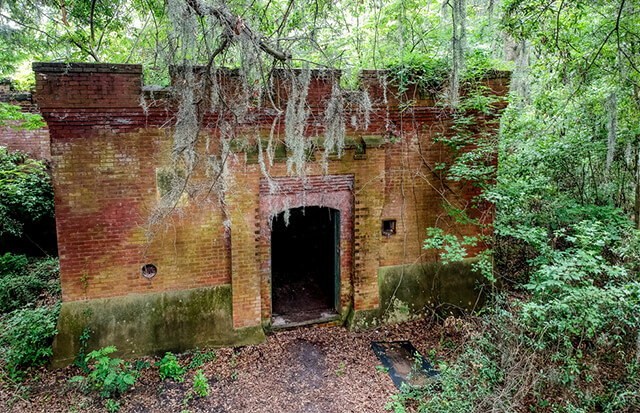
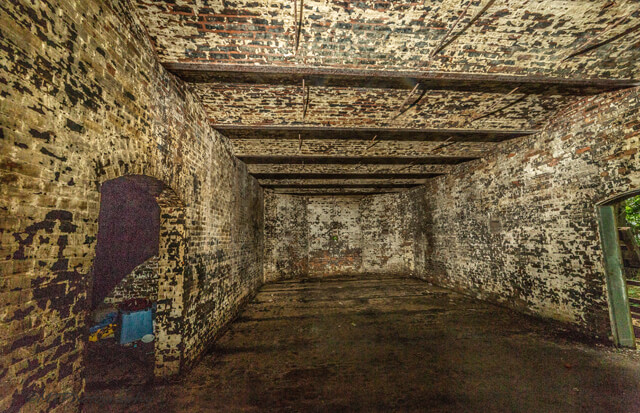
Savannah Municipal Powder Magazine
STATUS: Ongoing
There is a misconception that HSF only works downtown in the four local historic districts, but this is not the case. HSF strives to protect historic buildings and sites across all of Chatham County. There are a myriad of historic buildings from 19th century railroad warehouses to mid 20th century homes that are worthy of protection and which remain vulnerable.
On the far west side of town, set back from Ogeechee Road among a grove of trees and hidden from view, is one such building– the Savannah Powder Magazine. Designed by famed architects Alfred S. Eichberg and Hyman Witcover, it was built in 1898 to hold the city’s gunpowder supply, and it is believed to be one of the only surviving municipal powder magazines in the state. Vacant and unused since 1963, the property has suffered from deferred maintenance. In 2018, the City of Savannah, working with HSF, local preservationists, and LKS Architects began discussing possibly preserving the structure and developing the land around it as a passive park and trail system.
UPDATE: In December 2018, HSF was awarded a planning grant from the National Trust for Historic Preservation to fund a condition assessment survey. HSF will also provide the match required for the grant and help oversee the process. The condition assessment is a crucial first step and will guide all future preservation efforts on the Powder Magazine.
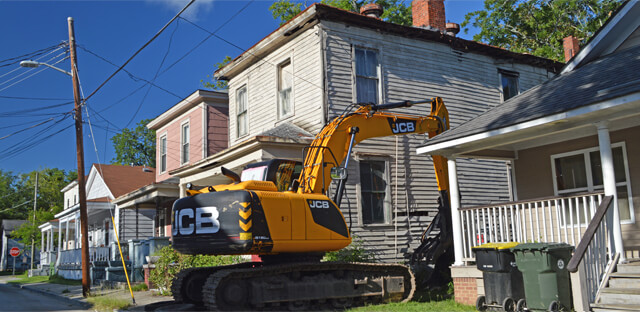
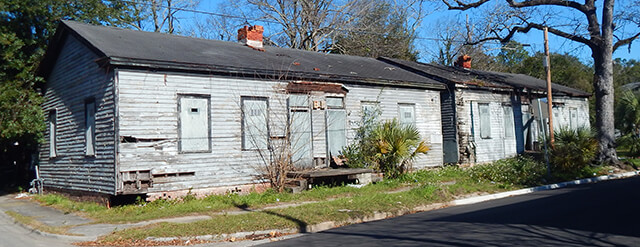
Cuyler-Brownville Re-survey Efforts
STATUS: Ongoing
Cuyler-Brownville is a historically African-American neighborhood, rich with history and notable architecture but facing an uncertain future. Decades of disinvestment has left the area with a high vacancy rate, blight, and crime. The Savannah Morning News reports that since it was designated a local historic district over 20 years ago, the neighborhood has seen 100 demolitions, calling into question its National Register Status.
UPDATE: To gain a true and accurate idea of conditions in Cuyler-Brownville and to monitor its integrity, the City of Savannah has received a state grant to fund a new neighborhood survey. The city does not have enough money to fund the entire project, so HSF has offered to pay for a portion as well, in hopes that the survey’s findings will guide us as to how we can better serve and assist this vital community. HSF is also on the verge of closing on a distressed property in Cuyler-Brownville at 2205 MLK Blvd. This will be the first project HSF has undertaken in the neighborhood since 2013 and will hopefully lead to other opportunities in the near future.
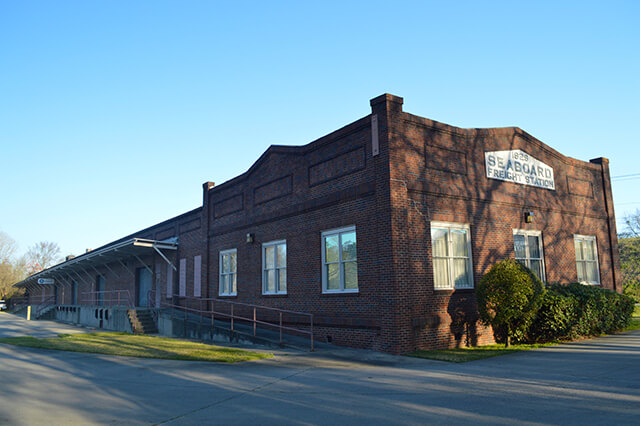
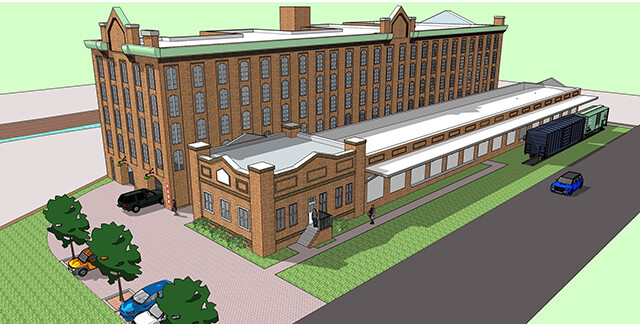
Seaboard Freight Station
STATUS: Disappointment
This 1929 freight station is just outside of two Historic Landmark Districts– the Savannah and the Central of Georgia National Historic Landmark District. Despite its close proximity and its ties to the city’s early railroad history, the building is not protected. In 2016, a developer purchased the property with the intent of building a new 160-unit apartment building on most of the 1.6-acre site. HSF was early to the table, advocating for the retention and reuse of the building. We were assured that the majority of the building was going to be saved and incorporated into the new master site plan.
UPDATE: In 2018, the original developer sold the property to a new owner, WEDP, a development group from Atlanta. WEDP has stated it intends to demolish the entire building to increase the number of planned units to 250. In spite of the developer’s claim to the contrary, HSF has proven the building does retain its architectural significance and integrity, and that it is practical to reuse it. HSF has also engaged with the owner to beseech them to rehab the freight station by utilizing the Historic Rehabilitation Tax Credit, going so far as to create our own rendering of the how the historic building could be incorporated but all to no avail. In February 2019, HSF participated in a heart bombing to raise awareness of the building’s fate, and we urged the public to write to the Savannah City Council, who have the ultimate say as to how the property is developed. In the end, the city settled on a weak compromise and approved the developer’s site plan so long as the office portion of the building (approximately one fourth of the entire structure) was saved and moved. This compromise was far less than HSF hoped for and is another example of out-of-scale, inappropriate development winning out in Savannah over the will of a very outspoken public.
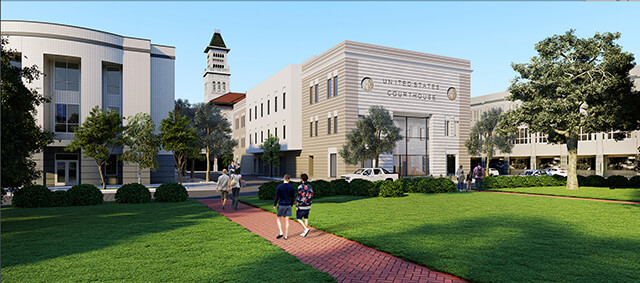
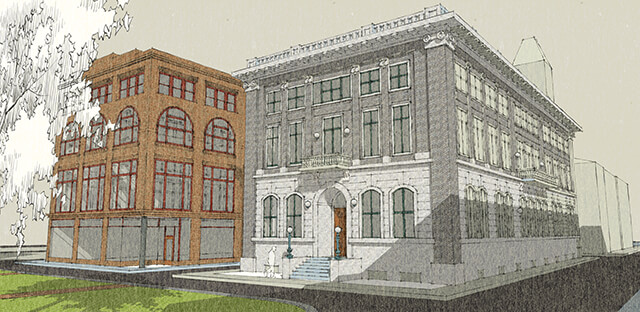
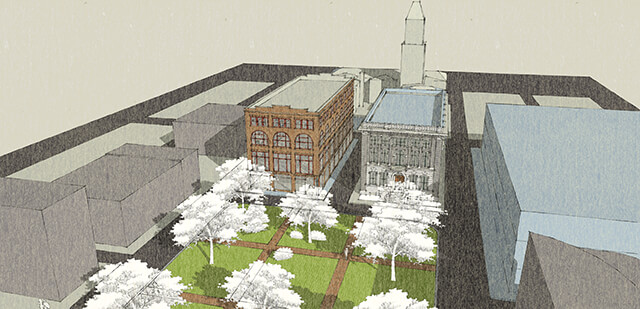
Tomochichi Courthouse Annex
STATUS: Ongoing
The Federal government is planning to construct a new annex to the Tomochichi Federal Courthouse on the eastern trust lots of Telfair Square. What you may not know is HSF’s level of involvement in that process and how HSF is working to ensure that Oglethorpe’s Town Plan is honored and that Savannah gets the best design possible. For over a year now, HSF has been representing preservation interests at both public and private meetings, ranging from stakeholder meetings with the General Services Administration, the agency responsible for designing and executing the project, to advocating for the protection of the Oglethorpe Plan with local Federal judges.
UPDATE: The two trust lots in question are bisected by President Street. Early design concepts released in the fall of 2017 revealed that GSA proposed to build a sprawling two-story building which would occupy both trust lots and span President Street, effectively blocking any visual reference to the historic grid. HSF was clear and consistent about the importance of maintaining the grid. In doing so, we have collaborated with the Downtown Neighborhood Association, staff at the Metropolitan Planning Commission, the Historic District Board of Review, local architects, and the local arts/design community in developing and advocating for an alternative plan. In August 2018, these efforts paid off when GSA announced they had revised their plan and would no longer construct the new building on both trust lots. Instead, they plan to build a single three story building on the southernmost trust lot, leaving President Street intact. There are still some unresolved issues that need to be addressed, including secured parking for the judges and the overall design of the architecture. HSF is committed to staying involved and advocating for the best possible outcome.
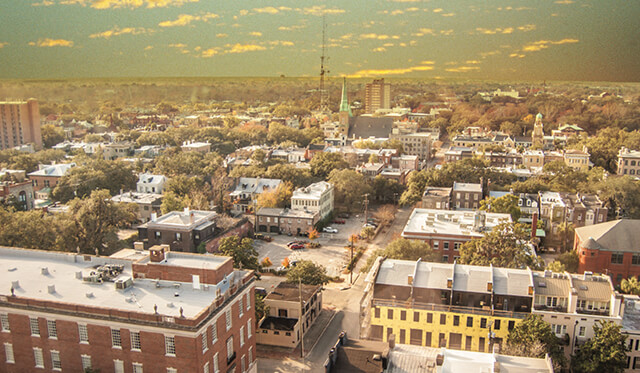
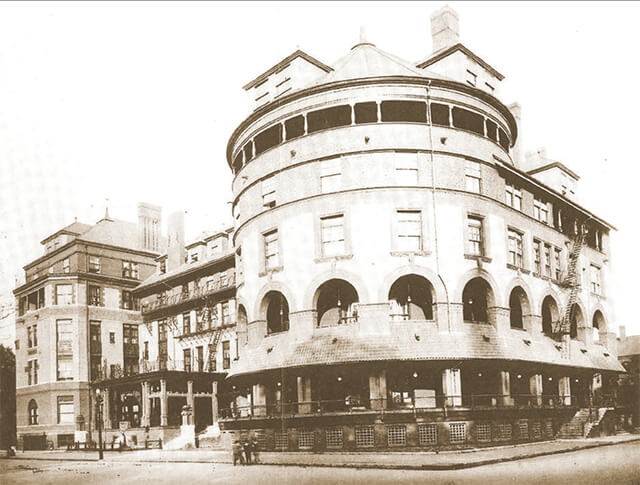
NPS Condition Assessment for the Savannah Landmark District
STATUS: Ongoing
In April 2018, the National Park Service released an Integrity and Condition Assessment of the Savannah National Historic Landmark District, conducted at the request of HSF. The report recommends to the NPS that Savannah’s district be placed on the “Threatened (Priority 1 List),” meaning the city’s National Historic Landmark District has suffered, or is in imminent danger of, a severe loss of integrity. A district is moved to Priority 1 status before becoming in danger of losing its National Historic Landmark listing.
UPDATE: In September 2018, the National Parks Service (NPS) announced that the status of the Savannah National Historic Landmark District would be officially changed to “threatened,” a downgrade in status from satisfactory. After a comprehensive study, site visits, public meetings, and public input, the NPS stated that large-scale development, the deterioration of the Oglethorpe Plan, threats to archaeological resources and historic infrastructure, and traffic and noise were key considerations in their determination to change the status.
The NPS states in their official press release, “The NPS will continue to monitor proposed projects that may diminish the integrity of the Savannah Town Plan and has recommended several steps to improve the overall health of the district, including updating the NHL nomination and developing a cultural landscape report.” The City of Savannah has created a task force to help reverse the status change and implement some measures to better preserve the character of the Landmark District. HSF serves on this task force.
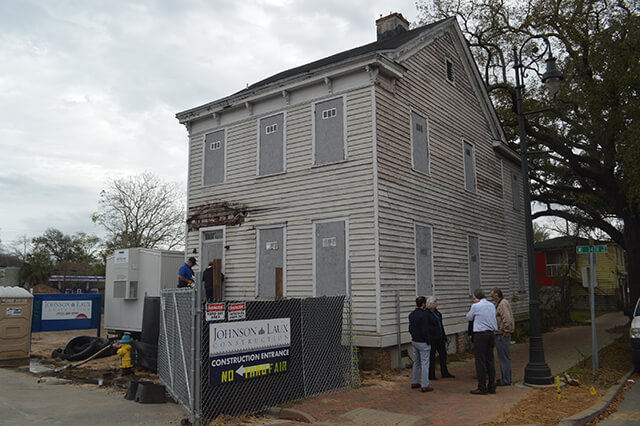
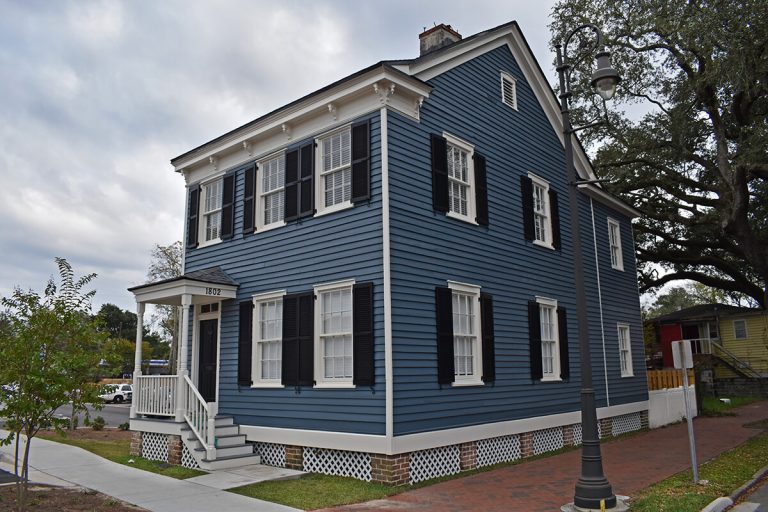
Meldrim Row Caretakers Cottage
STATUS: Success
In 2014, the City of Savannah announced plans to demolish two whole blocks of late 19th century worker’s cottages that were built by judge and city mayor Peter Meldrim for the post-Civil War era African-American community. The row of houses, known as Meldrim Row, sat in a narrow stretch of unprotected buildings between two local historic districts, and as such, was selected as the site of the city’s new Mid-City police precinct. HSF strenuously objected at the time, but in the end, were only successful in convincing the city to spare the Caretaker’s Cottage, a two-story structure at the West end of the 400 block of 34th Street. This concession was made only after HSF pledged $50,000 towards the building’s rehabilitation.
UPDATE: In 2018, well over three years after HSF’s initial pledge of support, the city has begun to move forward with the renovation. As part of the agreement with the city, HSF used a portion of its funds to develop the construction drawings and plans and will oversee their implementation to ensure the best preservation standards and practices are used. After paying for the architectural services, the majority of the $50K will go into a maintenance fund for future repairs. HSF will also receive a 10-year easement on the property. Construction is scheduled to commence in February 2019.
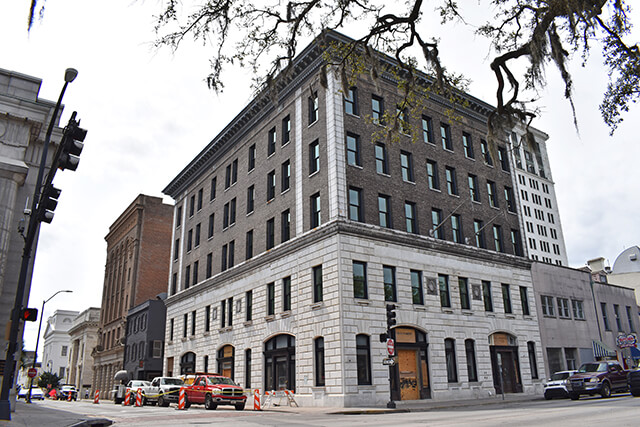
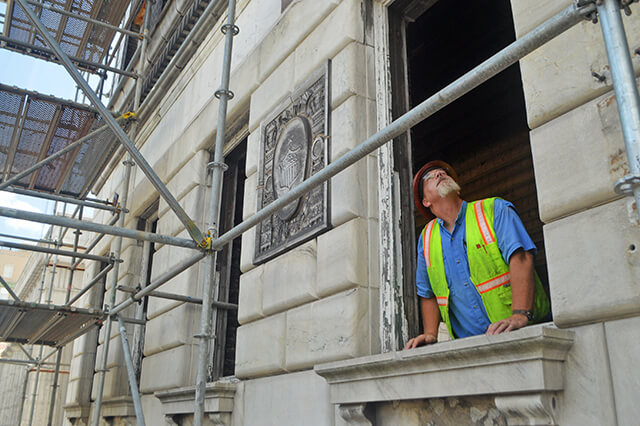
Wood Sash Windows Vs. Aluminum Clad Windows
STATUS: Success
Wood is good. Many of us have seen that bumper sticker, mostly in the Northeast, but it certainly applies to a forest-rich state like Georgia. So, when double-paned, aluminum clad windows were proposed as replacements for the historic building at the corner of Drayton and Bay Street, it was met with a healthy amount of circumspection. The old American Building (as it was known) is in the process of conversion into a hotel. Originally, plans were put forth to amend the city’s ordinance to allow aluminum clad replacement windows not only for #7 Drayton, but potentially for 30 other historic buildings in the Landmark District. The text amendment would have eliminated a key component of the local preservation ordinance standards, which help maintain integrity.
UPDATE: To the property owner’s credit and open discussion among parties, an out-of-the-box solution has been forged, which will honor the city’s existing preservation ordinance. The project will now utilize solid wood windows, but the new windows will have double panes. This will only apply to the subject building, not a wide swath of other historic buildings. Creative thinking, discussion, and compromise won the day, and the broader text amendment was withdrawn. Savannah’s local ordinance was upheld, and the building in question (set to be rechristened, The Drayton Hotel) will once again be a handsome part of Savannah’s streetscape.
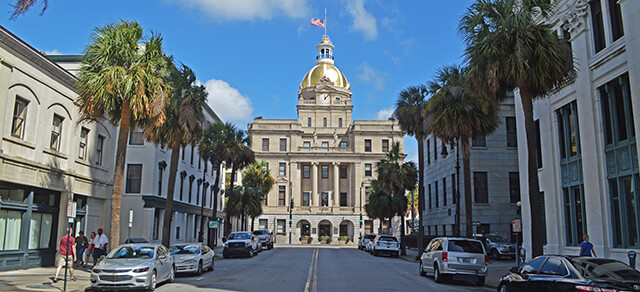
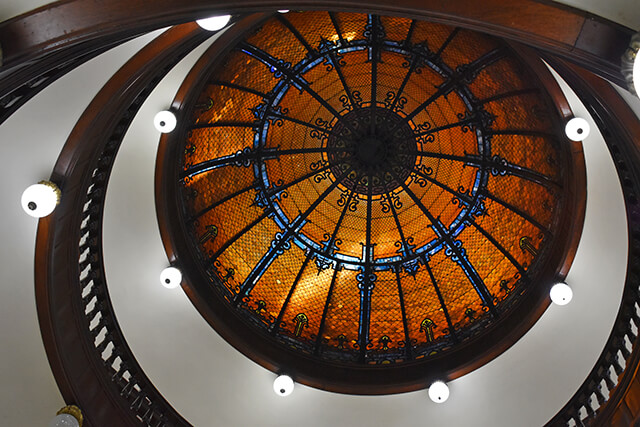
City Hall
STATUS: Success
Savannah’s beautiful City Hall, with its gold dome, is one of the finest municipal buildings in the state, but the 115-year-old building is showing its age. There are several preservation issues the building is facing, including an unknown fate as to its future use.
UPDATE: In 2018, HSF helped fund a detailed condition assessment for what is arguably the most architecturally significant public building in Savannah. Made possible through a grant from the National Trust for Historic Preservation, which HSF applied and provided the match for, plus an equal match by the City itself, the condition assessment was conducted by Lominack, Kohlman, Smith Architects. The nearly 200-page report provided both observations about the building and corresponding suggestions for restoration and preservation treatments. Elements such as the mosaic tiles in the front foyer, the soaring stained glass dome in the rotunda, the well worn parquet floors in the council chambers, and even the original elevator cages all received thorough scrutiny and provided the city alderman a prioritized list of needed repairs and guidance for best preservation standards and practices.
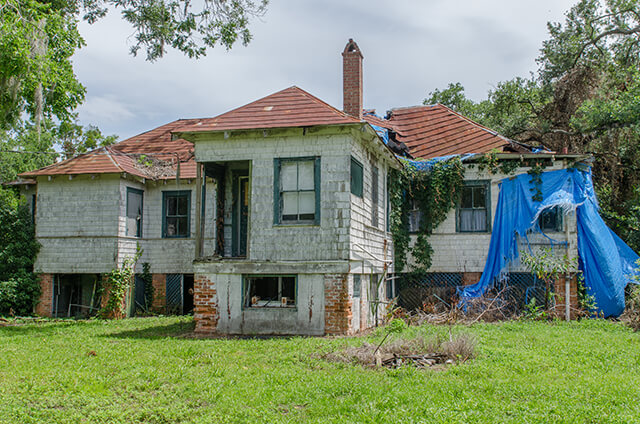
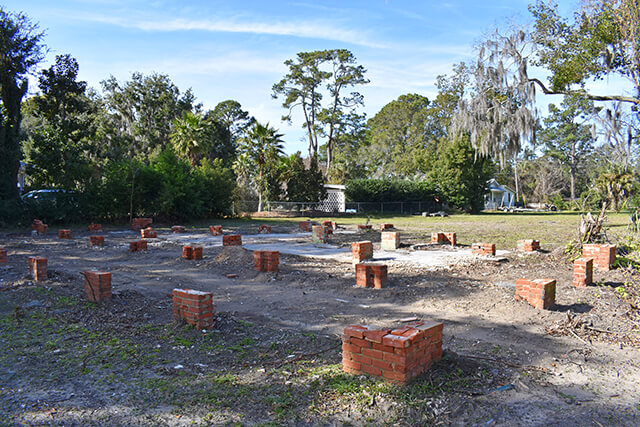
Mercer Cottage
STATUS: Disappointment
The 101-year-old Mercer Cottage on Burnside Island, built by the uncle of songwriting legend Johnny Mercer, is facing imminent demolition by the State of Georgia’s Department of Natural Resources (DNR).
The modest shingle-style cottage was one of several built by Robert Mercer after the turn of the 20th century as part of the Vernon View development. As a child, Johnny Mercer– a Savannah native– would spend time in Vernon View, located near the banks of the very river that became the namesake of one of his most famous compositions, Moon River.
The state has not been a good steward. DNR acquired the house in 1978 as part of the Ossabaw Island Heritage Preserve. For a while it was used for staff, but beginning in the 1990s, it was abandoned completely. It has been vacant ever since. Not only has it been vacant, but it has been virtually ignored. After a series of storms over the last two years, a tree fell on part of the roof and damaged it. Now, DNR says it is beyond repair. However, preservationists who have visited the site feel far more optimistic. The property is eligible for the National Register of Historic Places and, as such, is worthy of preservation.
UPDATE: In 2018, HSF and the The Ossabaw Island Foundation petitioned DNR to consider alternatives to demolition, but to no avail. HSF offered to buy the property and committed to helping restore the house and allowing a limited-use easement on the property granting DNR unrestricted access to the dock and fueling station on the Vernon River, which seemed to be the one element of the property they coveted most. DNR declined the offer. HSF also approved a generous grant to assist a couple interested in moving the cottage to a vacant piece of land across the street. The grant would have paid for half the cost to move the structure, but unfortunately, the couple could not secure the land in time. Ultimately, DNR sought bids to have the house demolished/deconstructed. A local non-profit that deconstructs homes to divert the materials from the landfill, Emergent Structures, was the winning bid. Though disappointed at the outcome, HSF was glad that at least the historic materials would be preserved. HSF offered Emergent Structures a challenge grant of $2,500 to help get them started on their work. They were successful in matching the grant and deconstruction was completed by the end of October of 2018.
